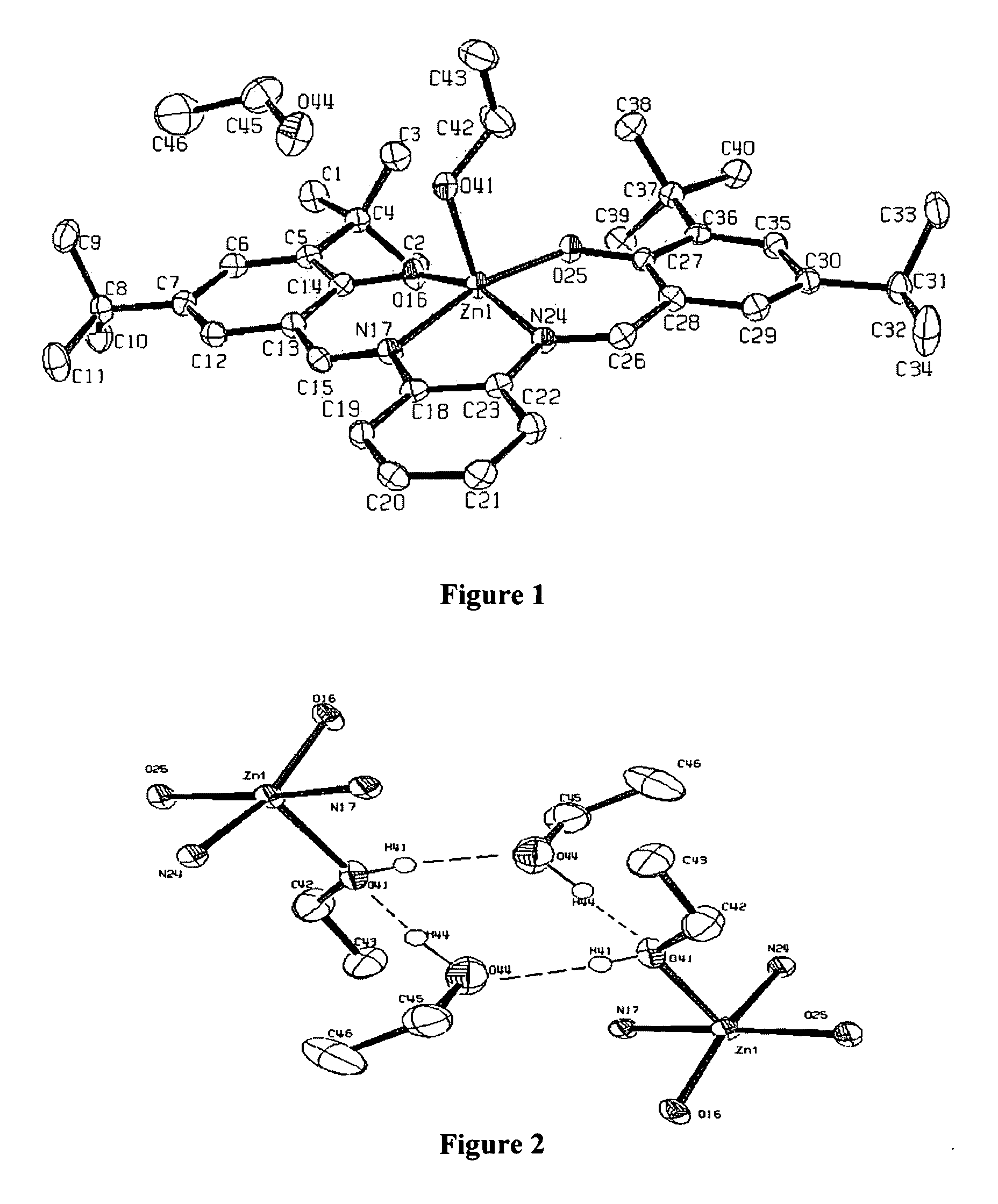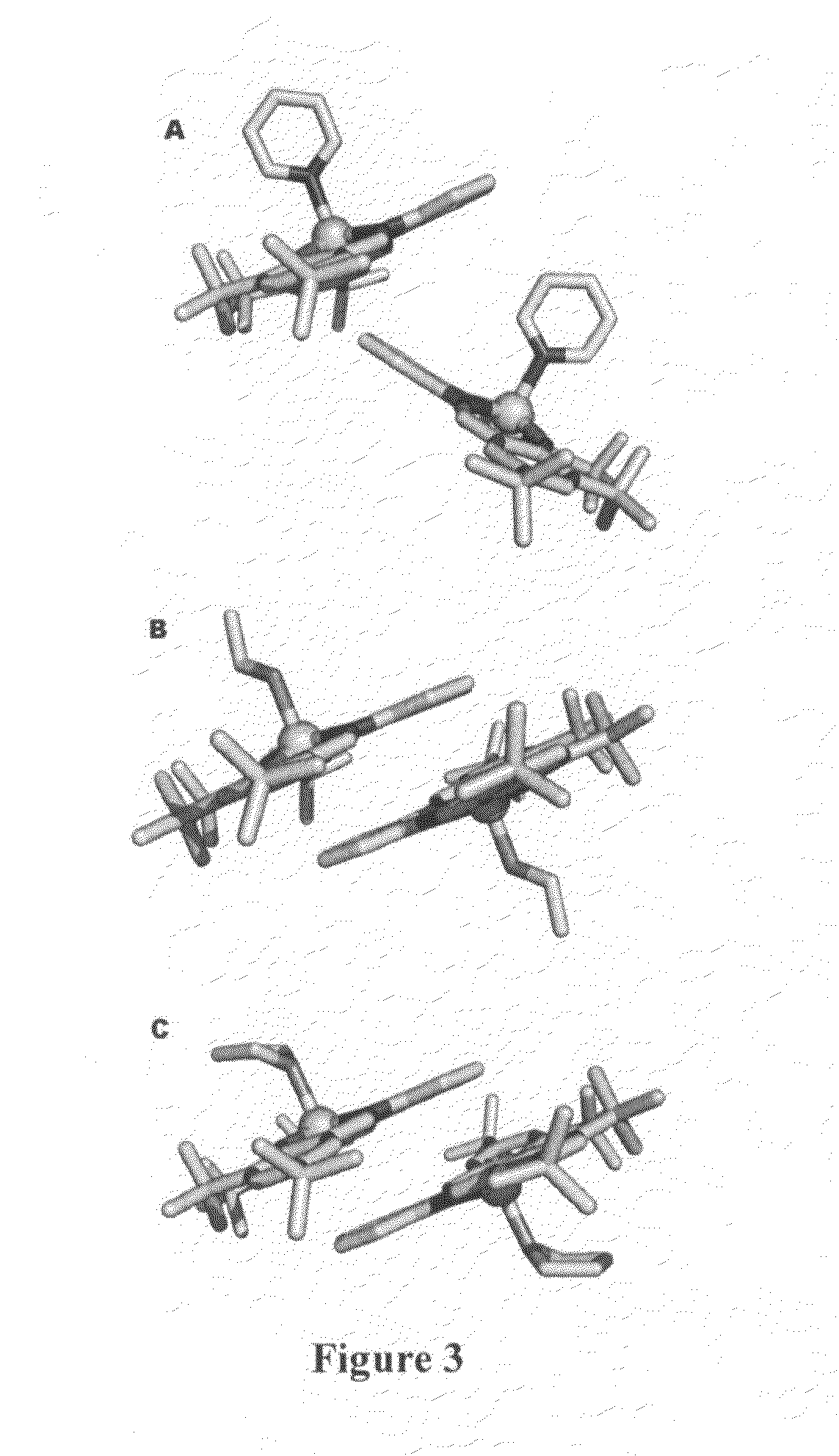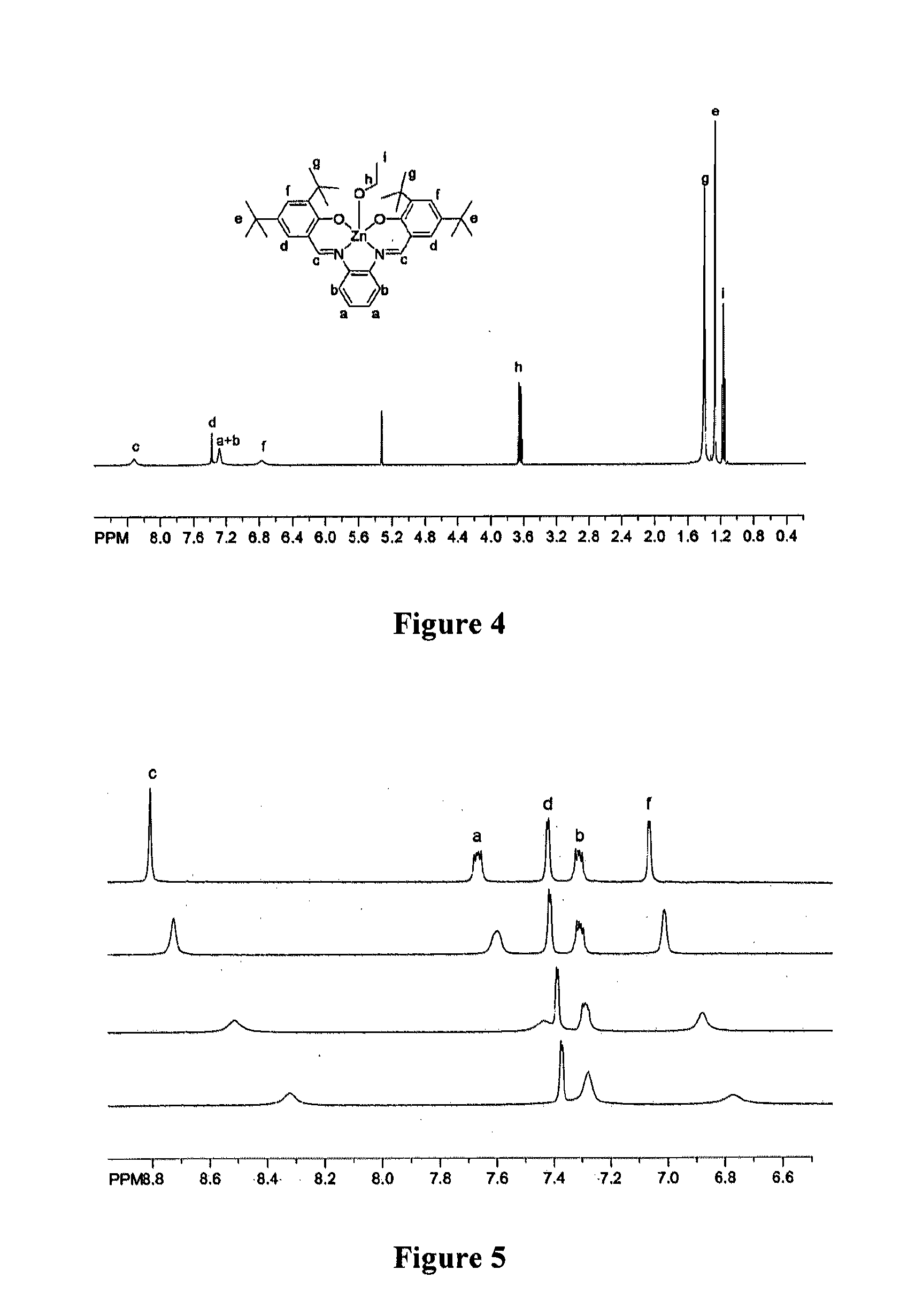Methods and systems for detection of nitroalkyl, nitroamine, nitroaromatic and peroxide compounds
a technology of nitroamine and nitroaromatic, which is applied in the direction of fluorescence/phosphorescence, material analysis through optical means, instruments, etc., can solve the problems of difficult detection of dmnb by fluorescence quenching, difficult detection of dmnb, and general challenges in detection of nitroalkyl and nitroamine. achieve good sensitivity
- Summary
- Abstract
- Description
- Claims
- Application Information
AI Technical Summary
Benefits of technology
Problems solved by technology
Method used
Image
Examples
example 1a
[0069]ZnL(base). To a flask of dry ethanol, ortho-phenylenediamine (0.5 mmol) and 3,5-di-tert-butyl salicylaldehyde (1 mmol) were added and refluxed overnight. The reaction mixture was filtered and a yellow solid, H2L (H2L=N,N′-phenylenebis-(3,5-di-tert-butylsalicylideneimine) was collected. H2L (0.5 mmol), was dissolved in ethanol with heat and a solution of Zn(OAc)2 (0.5 mmol) in ethanol was added dropwise. The orange solution was refluxed for 2 hours and cooled to room temperature. Bright orange crystals of ZnL(EtOH).EtOH were collected and analyzed. Elemental analysis for C40H57N2O4Zn calculated (found): C, 69.10 (69.02); H, 8.28 (8.44); N, 4.03 (3.96). 1H-NMR (CD2Cl2): δ 8.32 (bs, 2H imine), δ 7.37 (d 2H aromatic), δ 7.28 (bs 4H aromatic), δ 6.77 (bs 2H aromatic), δ 3.63 (q 4H CH2 ethanol), δ 1.40 (bs, 18H t-butyl), δ 1.27 (s, 18H, t-butyl), δ 1.17 (t, 6H, CH3 ethanol). b, broad; d, doublet; s, singlet; q, quartet. Recrystallization of ZnL(EtOH).(EtOH) from the respective solve...
example 1b
[0070]X-ray crystallography. Data were collected on a Bruker-Nonius KappaCCD diffractometer utilizing Mo Ka radiation. Epoxy was used to mount crystals on a thin glass fiber, which were cooled to ˜125K in the cold stream produced of an Oxford Cryosystems cooler. Scans were designed using the Bruker-Nonius Collect package, while integration and scaling were done using the routines HKL2000 and Scalepak. Structure solutions were obtained using the SIR software, providing atomic coordinates for a refinement using SHELXL-97, utilizing the interface and the additional utilities of WinGX. In ZnL(THF) and ZnL(py), the data quality allowed hydrogens to be located from the difference map and freely refined with isotropic thermal parameters. This was not the case for ZnL(EtOH).EtOH, where hydrogens could only be reasonably refined by constraining them to ideal geometries and performing a riding refinement with hydrogen thermal parameters fixed at a multiple of their bounded partner. Structures...
example 1c
[0071]Physical Characterization. Electrochemical measurements were performed on a BAS CV50W cyclic voltammeter using Fc / Fc+ as an internal standard, 0.1M tetrabutylammonium hexafluorophosphate as a supporting electrolyte, a Pt working electrode, a Pt auxiliary electrode, and Ag / AgCl as a reference electrode. 1H-NMR spectra were collected with a Bruker 400 MHz (400.13 MHz) spectrometer. Solution molecular weight determinations were measured by vapor pressure osmometry using a Wespro Vapro model 5520 calibrated with benzil.
[0072]NMR titration spectra were collected in CD2Cl2 (EtOH) or CD3CN (Nitroquinoline). The titrations were monitored by chemical shift changes of the imine peak (˜8.3 ppm). Titration of ethanol was performed at a 12 mM ZnL concentration with EtOH added via micropipet. Titration of nitroquinoline was performed in the same manner with a ZnL concentration of 8 mM; due to spectral overlap in the aromatic region, the nitroquinoline titration was not taken to completion.
[...
PUM
 Login to View More
Login to View More Abstract
Description
Claims
Application Information
 Login to View More
Login to View More - R&D
- Intellectual Property
- Life Sciences
- Materials
- Tech Scout
- Unparalleled Data Quality
- Higher Quality Content
- 60% Fewer Hallucinations
Browse by: Latest US Patents, China's latest patents, Technical Efficacy Thesaurus, Application Domain, Technology Topic, Popular Technical Reports.
© 2025 PatSnap. All rights reserved.Legal|Privacy policy|Modern Slavery Act Transparency Statement|Sitemap|About US| Contact US: help@patsnap.com



